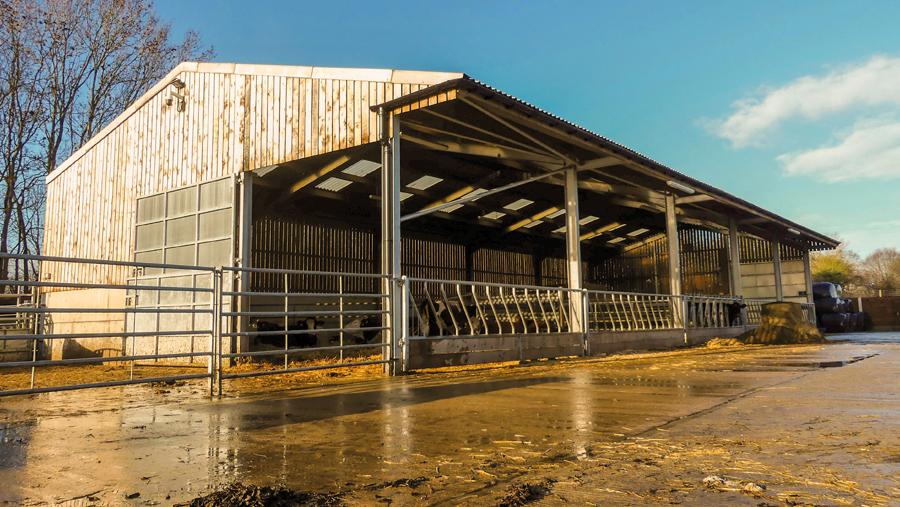Advertiser content
Farm buildings on estates – don’t miss out on tax reliefs

From January 1st 2021 the Annual Investment Allowance is being reduced from £1m to £200,000 per annum and the reduction in Writing Down Allowances on special rate assets reduced from 8% to 6% in April 2019.
Landowners with qualifying trades such as farming should therefore consider checking whether valuable capital allowances are being missed.
Qualifying expenditure on buildings
Where a business spends money on acquiring or constructing a building it may be possible to claim a tax deduction for certain aspects of the cost in the form of capital allowances.
The qualifying expenditure would usually fall into one of two categories;
- Integral features or property-embedded fixtures and fittings (electrical systems, water and heating systems etc) at a rate of 6% per annum or;
- Structures and Buildings Allowance (SBAs) on the cost of the building itself (since October 2018) at rate of 3% per annum.
However, the capital allowances legislation includes a list of certain expenditure that does not fall into the definition of a building or structure and so plant and machinery allowances may be claimed.
Plant and Machinery (P & M) allowances are currently 18% per annum. One such category of ‘building’ was tested at the First Tier Tribunal in 2019 by a farmer.
Definition tested in law: May & Anor 2019
In this case the farmer successfully claimed the higher rate P & M allowances on a new-build grain drying facility.
The case centred around whether the grain store was a ‘silo provided for temporary storage’ and so fell into the list of exemptions within the legislative definition of a building or structure and therefore P & M allowances could be claimed.
The success of this case centred around the specialist nature of the grain drying facility with it not merely being part of the premises where the farmer’s business was carried on.
The facility performed the active function of drying the grain and maintaining its condition until sold.
The features of the building essential to the performance of its function included the height at which the roof was pitched, the power floated concrete floor, the thicker-than-normal concrete walls and the air inlet and exhaust fan located on the walls.
Particular attention was given in the case to the specialist air flow system integrated in the facility.
While the case was a first tier case, and so is not binding authority, it does provide some interesting reading.
The success of this particular claim was very case specific and each case should be considered on its own merits and suitable advice should be taken before making any capital allowances claim.
Annual Investment Allowance (AIA)
The AIA provides for a tax deduction equal to 100% of qualifying expenditure in year one (currently £1m but is reducing to £200,000 from 1 January 2021).
Buildings usually fall outside the definition of qualifying expenditure. It is, however, possible to claim the AIA on integral features (or certain free-standing equipment within the building), and plant and machinery
Structures and Buildings Allowance (SBA)
If a farm building does not fall into a possible capital allowance claim, as highlighted in the 2019 tax case, then no capital allowances would be due on the fabric/structure of the building.
However, from 29 October 2018, expenditure on constructing or renovating non-residential buildings and structures used in the trade may qualify for SBAs.
The annual allowance is given at a rate of 3% per annum (prior to April 2020 the rate was 2% per annum), with qualifying expenditure including professional fees relating to design and construction, costs incurred in preparing the site, construction costs and fitting out costs.
Typically, construction and fitting out costs will include expenditure that may qualify for other capital allowances and so it is important to have detailed work schedules to be able to identify these assets and claim the most beneficial allowances.
If the building is sold, the seller’s entitlement to claim the SBA stops with any remaining allowance passing to the buyer (the buyer’s entitlement to claim the SBA will depend on whether they continue to use the building in a qualifying trade).
Who we are
Smith & Williamson LLP is part of The Tilney Smith & Williamson Group, a leading financial and professional services firm providing a comprehensive range of investment management, tax, financial advisory and accountancy services to private clients and their business interests.
We specialise in advice for farming businesses of all types varying from 50 to over 5000 acres.
We have experience with all types of farming enterprises including livestock, arable, fruit production and forestry as well as a range of diversified enterprises such as residential and commercial letting, leisure activities, energy and food processing.
Through our intimate knowledge of our clients’ businesses and family history, we work closely with them on matters such as succession planning, business structure, buying and selling of farms, funding, development land and diversification.
We advise on both business and personal tax with significant experience of the intricacies of tax law relating to land and agriculture.
How we can help
We can review landowners’ records where they have purchased or built non-residential property to use in a qualifying business. If capital allowance claims have been missed, we can advise on appropriate claims and time limits.
Lisa Ball, Partner, Smith & Williamson LLP
T: 01722 431 035
E: Lisa.ball@smithandwilliamson.com
Provided by
Smith & Williamson LLP is part of The Tilney Smith & Williamson Group, a leading financial and professional services firm providing a comprehensive range of investment management, tax, financial advisory and accountancy services to private clients and their business interests.
